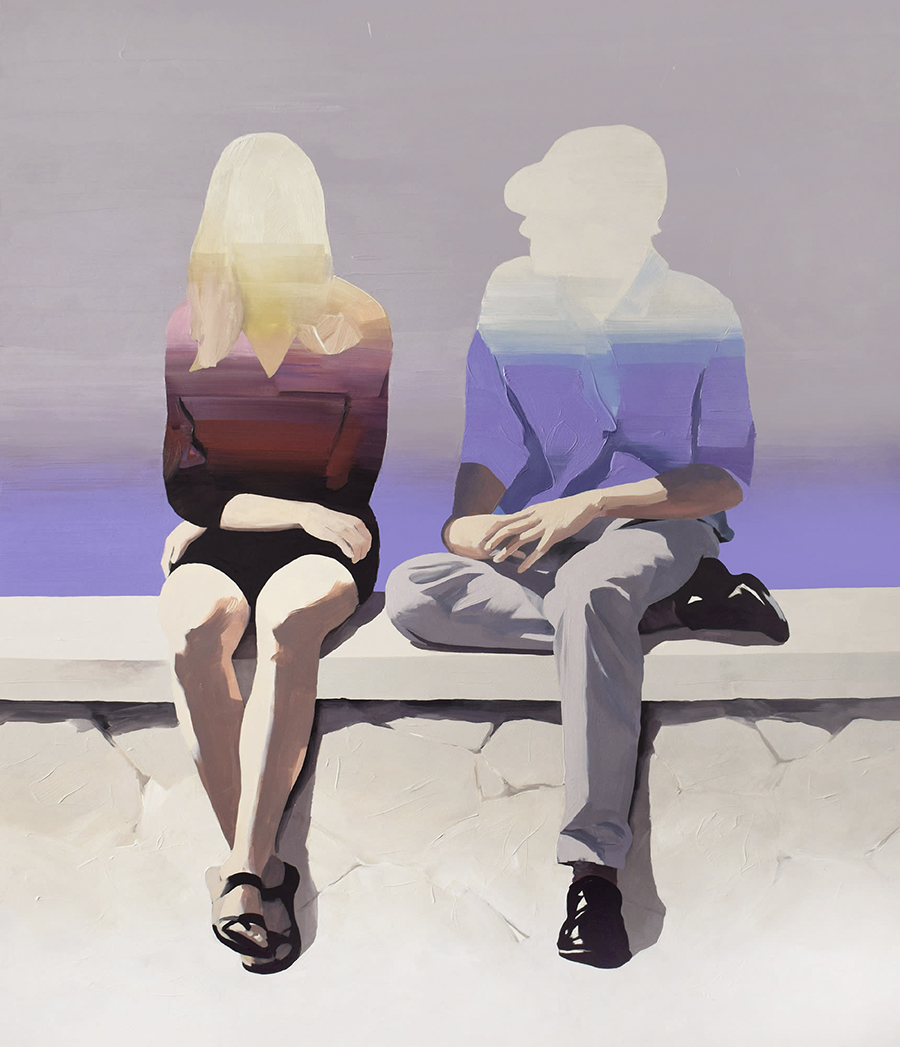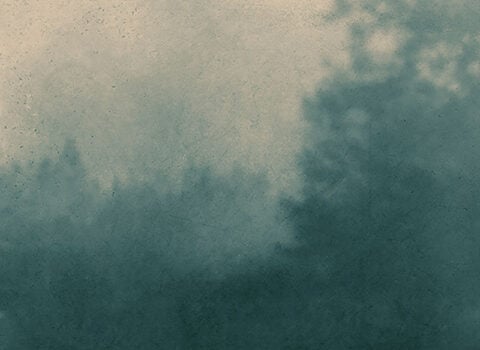
“Representation #16?18 (matchbook),” by Cynthia Greig © The artist. Courtesy Clark Gallery, Lincoln, Massachusetts
Readers of Elif Batuman’s delightful first novel, The Idiot, will need no introduction to its sequel, Either/Or (Penguin Press, $27), which shares both its pleasures and its limitations. Those as yet unfamiliar with Selin, Batuman’s Turkish-American narrator, and her comic philosophical riffs on college life, might do well to begin with The Idiot, which fully describes Selin’s world: her roommates and friends, her academic interests, and above all, her unrequited crush, Ivan.
The Idiot takes place in 1995, primarily at Harvard University, where Selin is a freshman. Either/Or, set the following year, cheerfully offers more of the same. Whereas The Idiot took its title from Dostoevsky’s great novel, Either/Or refers, of course, to Kierkegaard’s famous work of literary philosophy. Selin, in the novel’s early pages, picks up a copy and reads, on the back, “Either, then, one is to live aesthetically or one is to live ethically,” and finds her heart “pounding.” She and her close friend Svetlana have deployed “the ethical and the aesthetic” as “the framework . . . to talk about the ways we were different.” Indeed, it’s a distinction made early in The Idiot and elaborated on in Either/Or, and in some measure underpins the whimsical, relatively plotless form of both novels. Selin explains that “Svetlana liked taking introductions and survey classes, ‘mastering’ basics before moving to the next level,” while she herself “had a terror of being bored,” and preferred highly specific classes with interesting titles, even when she had no idea what was going on.
In both novels, the academic year provides such structure as the narrative requires, followed by an account of Selin’s summer holidays—which she spends, in the first volume, in Hungary; and in the second, chiefly in Turkey, where she is doing research for Harvard’s Let’s Go travel guide. Beyond this, along with her social interactions, Selin’s courses and reading shape her thoughts. Whereas she spends The Idiot mooning over a guy named Ivan (whose Hungarian origins provide the logic for her summer in Hungary), the same Ivan has, in Either/Or, graduated and gone to Stanford. Selin continues to obsess about him for a while, suffers from depression, takes appropriate medication, and is able to return to living: her attention is drawn to other men. She loses her virginity; she watches her friends embark on their first significant romantic relationships; she eventually, in Turkey, has her own unexpected blissful romance.
The joys of Batuman’s fiction lie not so much in plot or the development of characters, but rather in Selin herself—her lively voice, her comic observations, and her marriage of literature and philosophy with the potentially oppressive banality of undergraduate life. There’s something of the children’s book character Amelia Bedelia about Selin, who is similarly literal-minded. When a professor complains that Virginia Woolf hadn’t read Henri Bergson, she rants,
So one writer hadn’t read another writer: how was that proof that what they were saying wasn’t related? . . . What kind of cretins cared more about hammering out a string of inheritance than about discovering universal truths?
In a lighter moment, when a storekeeper gives her a free matchbook with her pack of cigarettes, she feels a sense of “wonder” at the matchbook: “An actual little book, with a staple. For free. The thing Prometheus had paid for with his liver.”
Such riffs—the aperçus of a brilliant literary oddball—are as great a pleasure in Either/Or as in The Idiot, and for many readers, will provide sustenance enough. Others may wonder how much campus life (the more irritating to many for being at Harvard) one can really take. The juxtaposition of the most earnest and profound questions (how should one live?) with the minutiae of dorms and dining halls is both realistic and amusing; but frustratingly, the pesky question of what’s at stake recurs. At just over three hundred and fifty pages, Either/Or is slimmer than its predecessor, but in total Batuman devotes as many pages to Selin as Dostoevsky does to Prince Myshkin, with arguably rather less cause. As my sister once observed after we’d fallen off our chairs laughing at a funny passage from Anthony Powell’s twelve-volume A Dance to the Music of Time, “It seems perhaps strange to write so many pages that are quite so light.”

Couple at the Seaside, by Jarek Puczel © The artist. Courtesy Maybaum Gallery, San Francisco
Nell Zink’s new novel, Avalon (Knopf, $27), also takes as its subject a young woman’s coming of age. Bran, however, living in southern California with the family of her common-law stepfather, Doug Henderson, could hardly be farther from the ivy-covered halls of Harvard: the Hendersons own a plant nursery in Torrance called Bourdon Farms, and live on the premises, along with a rowdy biker gang. Since she was six, Bran (short for Brandy) has lived in an “unheated lean-to, which reeked of mice, outside what was once the back door.” Bran’s mother left the household long ago to become a nun at a Buddhist center in the Sierra Nevada, and her maternal grandparents, though nominally loving, failed to take her in because “they lacked resources.”
Bran’s home life is colorful but erratic—“two refrigerators stocked with beer, but no working oven”—and from sixth grade onward, she finds solace in her friendship with a boy named Jay. Adopted from Russia, but living in much more privileged circumstances than she, he is nonetheless “a pariah” because he is gay. Though without talent, he longs to become a dancer, and studies flamenco for years with a blind woman named Loretta. In high school, the pair befriend Henry, “a hot, bone-straight boy,” and Fifi, who “dressed like a toddler and was conspicuous everywhere she went,” along with a brilliant but laconic boy named Will, who “battled cystic acne with drugs that required him to wear shiny sunblock indoors.” All of them work on the school’s literary magazine. When the time for college comes, Bran’s friends disperse—Jay to nearby UCLA; Fifi to Cal Poly; Henry to Yale; and Will to UCSD—while she stays home to work, incredibly hard, at Bourdon Farms. At school, Jay swiftly befriends someone named Peter, with whom he is infatuated. Bran, when she meets Peter, finds herself similarly enthralled, and embarks on a strange, unfulfilled but mutually acknowledged, passionate affair with him. Peter soon acquires a fiancée on the East Coast, then transfers to Harvard, further complicating their relationship.
Rather in the way of Batuman’s Selin, Bran watches her life unfurl with some combination of resignation and surprise. It helps that she looks like Audrey Hepburn, as she says outright. In the wake of an unfortunate incident involving a party at the Hendersons, Will’s parents offer her a place to live, and we follow Bran as she endeavors to build an independent life—working as a barista and a gardener, and acting in Jay’s student films—without the institutional structures afforded her more fortunate friends.
Zink writes, in places, with almost cinematic vividness, and follows Bran’s evolution with an impressive commitment to realizing her experiences on the page. Yet I struggled with what seemed to be willful eccentricity in the setup: much about Bran’s circumstances felt artificial, even as the novel proceeds so carefully from its premises. Why would Bran have lived from early childhood in a miserable lean-to behind the Hendersons’ house? Why would Jay’s parents have paid a blind hippie to teach him flamenco dancing? Why would Peter so swiftly propose marriage to another woman while still at college?
Zink, like Batuman, is unwilling to construct an elaborate plot for the purposes of readerly satisfaction—surely a laudable resistance. In Batuman’s case, this means hewing to the institutional forms provided by college life; were Zink writing chiefly about any of Bran’s friends, that would also be the case with Avalon. But Bran’s ungrounded meandering is at the heart of the novel—she sets her sights on the unreliable Peter, and is otherwise without family, while her friends move on to find themselves—and it’s no wonder that the novel reflects that aimlessness. Zink’s book is ambitious in its refusal to accede to recognizable ambitions; but once again, for this reader, the question of what’s at stake resoundingly recurs. While Avalon is vivid and thorough—persistent, even, in its whimsy—it ultimately has little discernible emotional logic, leaving us able to recount what happens but unable to account for why.

Photograph by Tira Khan, from the series Winter of Our Discontent © The artist
The stakes are considerably higher in Noga Arikha’s gripping exploration of mental illness and consciousness, The Ceiling Outside (Basic Books, $29). Arikha, a philosopher and historian of ideas, sets out to write a book about patients in the neuropsychiatry unit at the Pitié-Salpêtrière Hospital in Paris, where she had been invited to sit in as a “fly on the wall” at weekly clinical meetings. It then transpired that her mother, the poet Anne Atik Arikha (and widow of the late eminent painter Avigdor Arikha), a longtime Paris resident beset by dementia, became a patient of that same hospital. This book, then, is the story of an exploration that became more personal and urgent with the onset of her mother’s illness.
Arikha’s interest lies in what constitutes a self: “This book is about both the self as it studies itself, and the self as it loses itself.” Consciousness, obviously, is essential to this inquiry, but so is feeling. The interconnectedness of mind and body, of awareness and experience, are thus the center of her study. The book focuses on close observation, and on questions rather than answers, not least, as Arikha points out, because of “an awareness of how our explanations change with time, and within and across cultures.”
From Descartes to the behavioral psychologists of the Twenties, the mind-body split was assumed. From the Fifties onward, for a time, that dualism was replaced by a brain-body distinction “that persists in many scientific corners.” More recently, an attention to the body itself has led to an understanding that
emotions generated in the body are central to cognition and communication, and to producing insights into perception and sensation, the sense of time, as well as the sense of agency . . . and, in general terms, the embodied sense of self.
Like Oliver Sacks and the neuroscientist Antonio Damasio, Arikha structures her exploration of these larger questions around individual cases. Each is fascinating not only in itself, but also as an opportunity for Arikha to expand on the historical and social understandings of particular ailments, and of the evolution of those understandings.
One of the patients is Vanessa, a thirty-eight-year-old woman who, after a diabetes-related hyperglycemic coma, awoke having completely forgotten the past decade of her life. When Arikha meets Vanessa, two years have elapsed since the awakening, a period of “temporal chaos. Direction, inner and outer, was lost. Space was a mess.” The doctors find “no plausible neurological explanation” for her condition: “The truth here resided somewhere within Vanessa’s embodied mind, body-mind.”
Other patients have very different but equally unsettling problems. Toussaint, a Haitian immigrant in his late fifties and the father of five, articulates his crisis as having been “bewitched”: he cannot sleep, and hears nightmarish voices even when awake. Geraldine, a widow in her early eighties, suffers from visual hallucinations, among other symptoms. Eric, a patient with Parkinson’s in his early sixties, has an overwhelming guilt complex: “I don’t deserve the trust of others,” he says. “I’ve accepted that I didn’t accept the things that occur in life. I no longer deserve to live.” He is, Arikha writes, “the incarnation of a negative thought, what remains after a ‘melancholic hurricane.’ ” Claire, twenty years after a fall that hurt her hand, has since suffered continual pain and carries “the injured and injurious hand . . . hidden away like a delicate little animal, wrapped inside a glove, partly hidden inside the crux of her left arm.” But there is no medical cause for this disability: “Her hand, said the psychiatrist, was the repository of all her feelings, the locus of all that had gone wrong, whatever it was.” A young father named Thomas also suffers from a series of neurological problems, including memory loss, but the doctors suspect his disease to be “fabricated . . . a collage of bizarre neurological symptoms that had no causes and no name,” leading them to diagnose him with Ganser syndrome, also known as “conversive pseudo-dementia.” The doctors “revealed that Thomas’s problem was the very fact of the performance of that problem.”
Between these case studies, Arikha threads deeply moving accounts of her mother’s perplexing and ever more common condition, Alzheimer’s, and of the ways in which her mother remains fully herself in spite of her cognitive decline. In fleeting moments she can seem unchanged, whether in her responses to music, in comments about her daughter’s hair, or even in the feeling of her embrace: “My mother’s embodied self feels identical to what it has always been,” she records. “When I hug her, I hug her.” (Like Arikha, I learned that my mother’s core self was not, for me at least, dependent on her memory or cognition: she was, almost to the last, and in spite of the ravages of Lewy body dementia, still herself.)
Many of these cases share a condition called anosognosia, initially the intended subject of Arikha’s dense, wide-reaching, and engrossing book. Anosognosia is, simply put, the inability to know what is missing or wrong with oneself. Arikha writes that she
believed the term could be considered descriptive of the human condition—since all of us are somewhat unaware of what ails us most centrally, and much of the time live within our own, neurotic blind spot. Stretching this idea, one could say that dementia is also a part of the human condition.
Fixed in time and in society, we tell our stories as best we can; for these patients, the doctors compile an external version of their stories. All accounts are of course partial and uncertain—but Arikha affirms that this makes them no less meaningful.

























































































